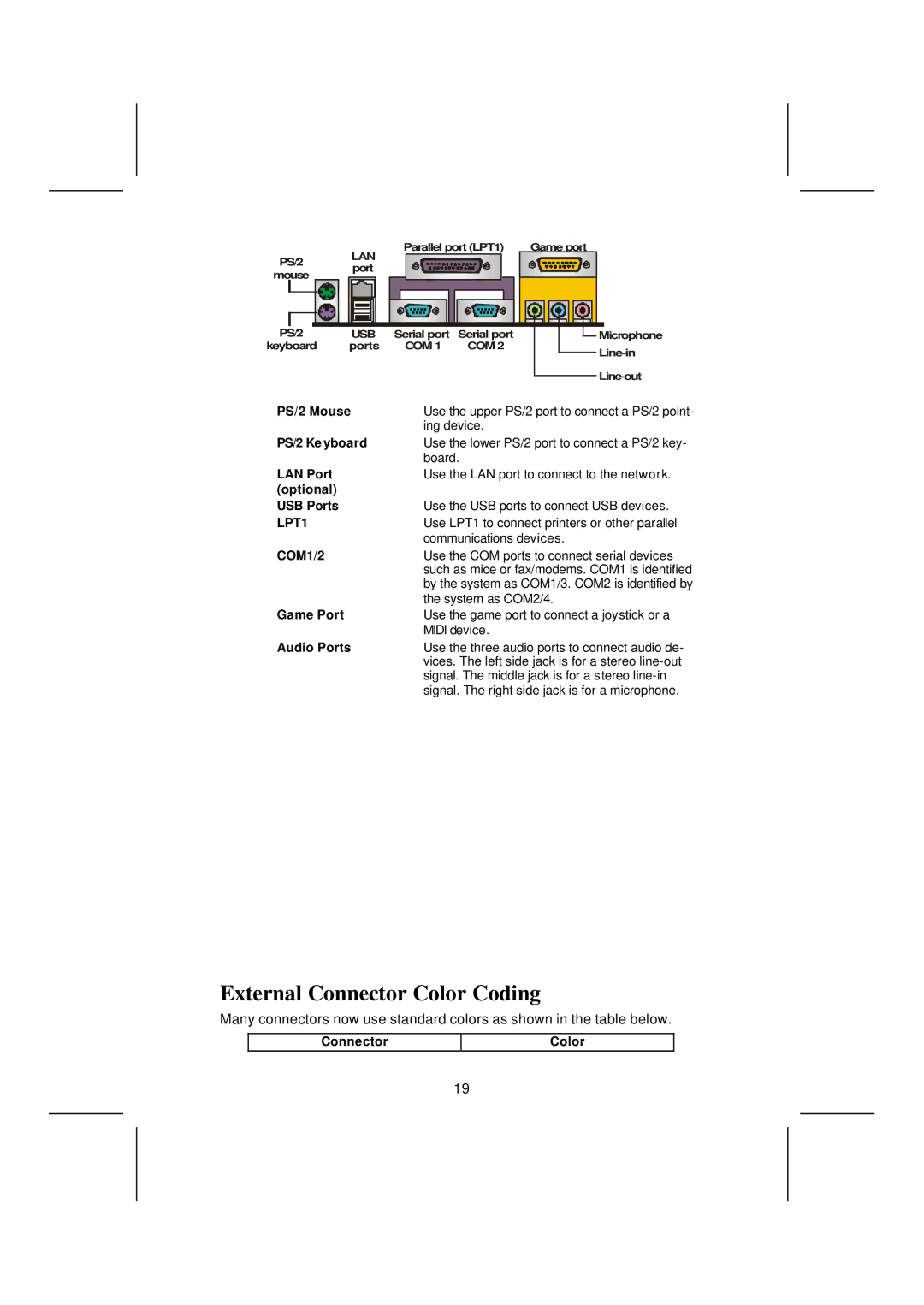
| LAN | Parallel port (LPT1) | Game port | |
PS/2 |
|
|
| |
port |
|
|
| |
mouse |
|
|
| |
|
|
|
| |
PS/2 | USB | Serial port | Serial port | Microphone |
keyboard | ports | COM 1 | COM 2 | |
|
|
|
| |
PS/2 Mouse | Use the upper PS/2 port to connect a PS/2 point- |
| ing device. |
PS/2 Ke yboard | Use the lower PS/2 port to connect a PS/2 key- |
| board. |
LAN Port | Use the LAN port to connect to the network. |
(optional) |
|
USB Ports | Use the USB ports to connect USB devices. |
LPT1 | Use LPT1 to connect printers or other parallel |
| communications devices. |
COM1/2 | Use the COM ports to connect serial devices |
| such as mice or fax/modems. COM1 is identified |
| by the system as COM1/3. COM2 is identified by |
| the system as COM2/4. |
Game Port | Use the game port to connect a joystick or a |
| MIDI device. |
Audio Ports | Use the three audio ports to connect audio de- |
| vices. The left side jack is for a stereo |
| signal. The middle jack is for a stereo |
| signal. The right side jack is for a microphone. |
External Connector Color Coding
Many connectors now use standard colors as shown in the table below.
Connector
Color
19
